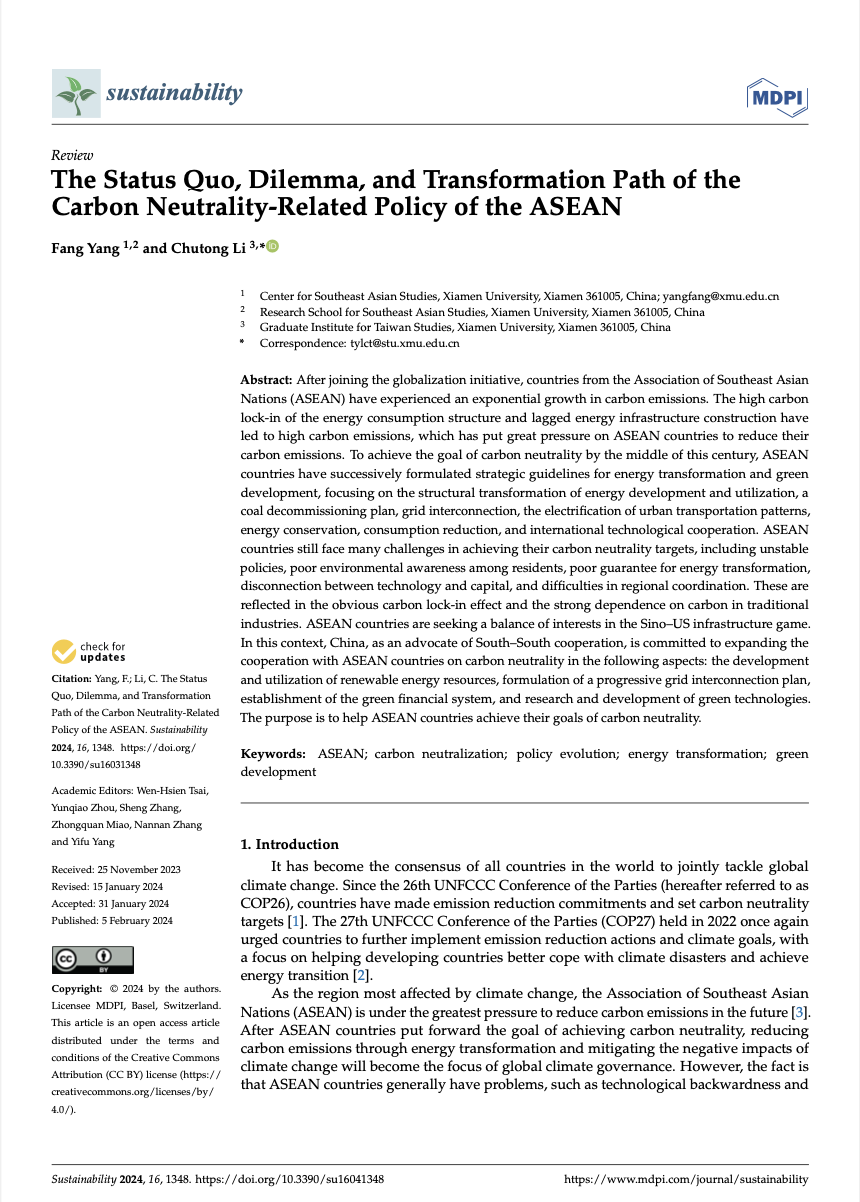
Keyword(s)
Author(s)
Fang Yang and Chutong Li
Country(ies)
Publisher
Published Date
Access
DOI
After joining the globalization initiative, countries from the Association of Southeast Asian Nations (ASEAN) have experienced an exponential growth in carbon emissions. The high carbon lock-in of the energy consumption structure and lagged energy infrastructure construction have led to high carbon emissions, which has put great pressure on ASEAN countries to reduce their carbon emissions. To achieve the goal of carbon neutrality by the middle of this century, ASEAN countries have successively formulated strategic guidelines for energy transformation and green development, focusing on the structural transformation of energy development and utilization, a coal decommissioning plan, grid interconnection, the electrification of urban transportation patterns, energy conservation, consumption reduction, and international technological cooperation. ASEAN countries still face many challenges in achieving their carbon neutrality targets, including unstable policies, poor environmental awareness among residents, poor guarantee for energy transformation, disconnection between technology and capital, and difficulties in regional coordination. These are reflected in the obvious carbon lock-in effect and the strong dependence on carbon in traditional industries. ASEAN countries are seeking a balance of interests in the Sino–US infrastructure game. In this context, China, as an advocate of South–South cooperation, is committed to expanding the cooperation with ASEAN countries on carbon neutrality in the following aspects: the development and utilization of renewable energy resources, formulation of a progressive grid interconnection plan, establishment of the green financial system, and research and development of green technologies. The purpose is to help ASEAN countries achieve their goals of carbon neutrality.